Is sorrel horse coloring the same as chestnut, or is it different? What is the definition of a sorrel horse? How can I spot a horse that has a sorrel coat color?
Are you interested in finding out more about the sorrel horse and the answers to these questions?
In this article, we’ll explore the sorrel horse color, its characteristics, and how it relates to the chestnut horse color.
So, if you’re interested in learning more about this unique horse color, read on!
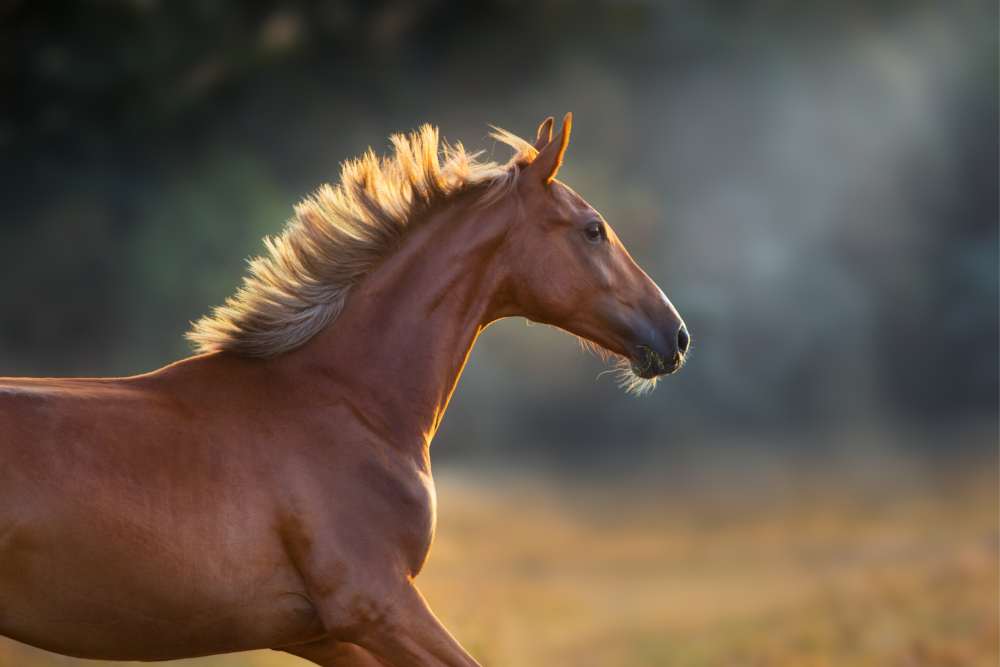
What Is A Sorrel Horse?
Let’s start off with the essential question, “What is a sorrel horse?” Sorrel refers to a horse’s coat color.
Sorrel is a horse with a reddish coat that lacks the color black. It is a term for chestnut and is one of the most prominent horse coat colors. Some places and breed registries differentiate between sorrel and chestnut, describing sorrel as a light, coppery color and chestnut as a browner color.
If you see a horse with a reddish brown coat and black points, it is not a sorrel; however, sometimes the mane and tail may be so dark red or brown that they appear black next to the brighter red coat.
To make a clear-cut distinction in this case, look at the horse’s legs; a sorrel will never have black legs.
Although sorrel horses’ manes and tails are frequently the same color as their coats, this is not always the case. Their mane and tail can also be darker than the reddish-brown hair on their body.
Some sorrel horses can also have a flaxen mane, which means their mane and tail are much lighter than their red coat. Think of it as a blonde. This only occurs with chestnuts and sorrels. The color can range from yellow to white on the mane and tail.
This gives a striking appearance to a sorrel and is known as a light sorrel. Light sorrels can sometimes be confused with Palomino horses.
Sorrel horses generally have the typical brown eyes, but it is possible for them to have blue eyes too, albeit rare. This has nothing to do with their coat color. If a sorrel horse has blue eyes, this is because of a genetic mutation that affects the pigment development of the iris.
Video Of A Sorrel Colored Horse
Sorrel Horse VS Chestnut: What’s The Difference?
You may have heard both of these words if you have been around horses for a while.
“Chestnut” and “Sorrel” are horse jargon to describe red-coated horses, right? Well, sort of. This is one of those situations that depends on who you ask.
Confusion exists from region to region, from light horses to heavy horses, and from discipline to discipline about the terms “sorrel” and “chestnut.” It is generally accepted that both sorrel and chestnut horses have red coats. Out of the two terms, red horses are more commonly called chestnuts.
Sorrel is a term more commonly used in North America than in other parts of the world, like Europe.
Europeans will call all shades of red “chestnut,” whether a bright orangey red or a dark brown red (referred to as a liver chestnut).
In North America (particularly horses in the Western disciplines and the Quarter Horse breed), a sorrel horse has a completely red coat.
In contrast, a chestnut can be a darker red and more brown, including a liver chestnut. You could think of sorrel as a “true” red.
Most sorrel horses have the same color mane and tail as their red coat, but a red horse with a flaxen mane can still be called a sorrel.
If the horse has darker points, it would then be classified as a chestnut. Note: darker does not mean black. If a horse is red (sorrel or chestnut), it will not have true black points.
If you want a clear-cut answer on whether chestnut and sorrel are the same, let’s look at the genetic side of things.
The gene that makes these horses red is recessive, meaning that any horse with a red coat has two red genes. This means that, genetically, chestnuts and sorrels are the same.
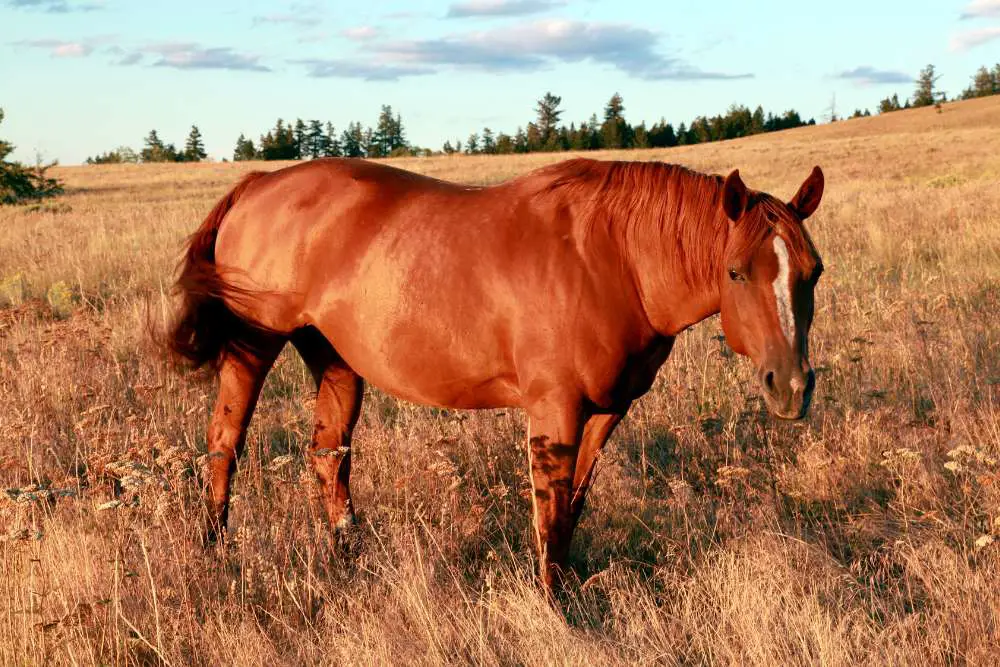
Red Horse Color Genetics
Horse color genetics are pretty fun to learn, and if you ever want to breed your own foal, it can help you narrow down what color the baby might pop out as.
The black/red factor, more often called the red factor and also known as the “extension gene,” determines whether a horse has a red base coat (sorrel or chestnut) or a black base coat.
To explain this next part, you will need to know what “allele” means. Allele (pronounced uh-leel) is the word that describes alternative forms or versions of a gene.
In horse coats, these are written as two letters (sometimes more), with either both dominant letters, one dominant and one recessive, or both recessive. Dominant genes are written in capital letters, while recessive genes are written in lower case.
Now, let’s look at what this would look like for red horses.
The red factor, or extension gene, can be in one of three different alleles. The name “red factor” comes from the fact that the two recessive alleles (e and ea ) only make red pigment (which is called “pheomelanin”). The ea allele is uncommon and has only been seen in the Black Forest, Knabstrupper, and Canadian horse breeds.
Red horses have two copies of the recessive red allele:
- e/e
- e/ea
- ea/ea
If a horse is E/E or E/e, they can produce black pigment in their offspring (think bay or black) but cannot pass on the recessive red factor allele.
Due to this, these horses are called homozygous black (meaning they can only produce black or bay horses).
E/e can produce black pigment and pass their dominant red factor allele (the capital E) to half of their offspring. Those horses can also pass the recessive red factor allele. There are bay or black horses that are able to produce red horses.
Chestnuts and sorrel are both e/e. Their skin may be black, but their coat is red.
Even though the genes for sorrel and chestnut are the same, some breed registries recognize the two colors as being different.
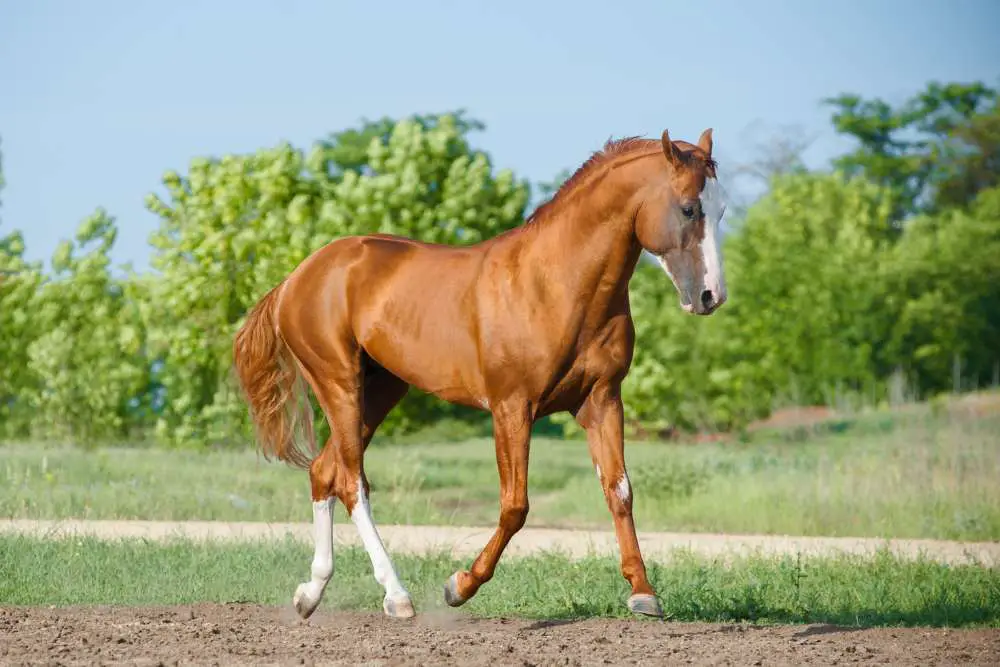
Terms Used in Horse Breed Registries to Classify Red Colors
Assume you have a horse that needs to be registered, but you can’t decide what color red it is.
The American Quarter Horse Association uses both terms, sorrel and chestnut. Generally, they say sorrel is a type of copper-red chestnut, while chestnut is a darker reddish-brown color.
For draft horse breeds, the name “chestnut” is taken a step further by registries, which offer different shades of the color.
The Tennessee Walking Horse Breeders and Exhibitors Association accepts three types of red horses for registration. Sorrel, chestnut, and chestnut-sorrel are the three red coat colors that can be registered.
Many organizations just avoid the issue and use one of the two terms to describe all reddish or brown colors that are not bay.
Horse breeds known to be labeled as Sorrel:
- American Quarter Horse
- Appaloosa
- Missouri Fox Trotter
- American Paint Horse
Sorrel Arabian or chestnut Arabian? I have heard them called both. Write down in the comments which one you think is more common.
Horse breeds known to be labeled as Chestnut:
- Haflinger
- Thoroughbred
- Welsh Pony
- Morgan Horse
- Classic Warmblood breeds
- Belgian Draft Horse
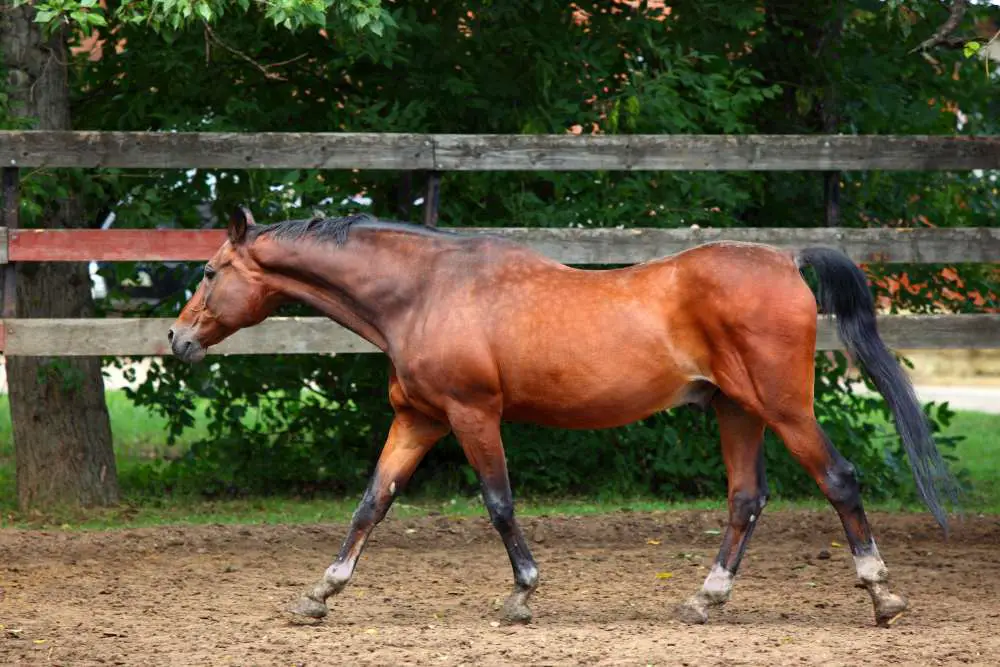
Horse Colors That Are Often Confused With Sorrel
If you are new to horses, it may surprise you just how many colors they can come in. You have the common ones that many of us are familiar with: bay, sorrel, grey, black, etc.
But then you have colors like dun, champagne, cremello, and silver dapple.
All of these variations can sometimes lead to confusion between colors.
So, how do you know the difference between sorrel and other colors that can look similar?
Bay
Bay horses that have very red coats like a “Blood Bay” can be confused with the color sorrel.
It is also a reddish brown color, however remember what I said before about the bay’s having black points.
Sorrels do not have any black on them, so that is one of the main ways to tell a horse is bay and not sorrel.
Red Dun
Red duns have a chestnut (or sorrel) base color and can be confused for sorrel. This color is created when the dun dilution gene affects a horse with the red factor.
Luckily, a dun is pretty easy to spot if you look for a few key things.
All dun horses have a prominent dark dorsal stripe (a line that runs down the middle of their back), and many have bars (or lines) on their legs.
In terms of shades, red duns can appear to be a dark sorrel color or be very light.
Some people have described them as being the color of a peach. If in doubt, look for that prominent dorsal stripe, and it is possible to have your horse’s color tested.
Red Roan
Like a red dun, a red roan is a horse with a red base (chestnut or sorrel) that is affected by the roan gene.
Red roans can be confused with sorrel horses, especially in the winter.
Roan can be identified by a mixture of white hairs flecked with a red coat.
Roan horses’ coats can sometimes change dramatically from summer to winter, with some roan horses appearing to be their base color in winter with little to no white.
Palomino
Palominos are another example of a red base color that can be drastically changed by adding a different gene.
In their case, it is the cream dilution gene.
The coat color of a palomino can range from super pale to bright orange to a dark dappled color. The easiest way to identify a palomino is to look at their mane.
All palominos have a light (and sometimes white) mane and tail.
However, palominos often get confused with sorrels that have a flaxen mane and tail. So the other thing to look for is that the coat is more yellow and lacks red hair like a chestnut or sorrel would have.
The cream gene takes out the red color of the sorrel coat.
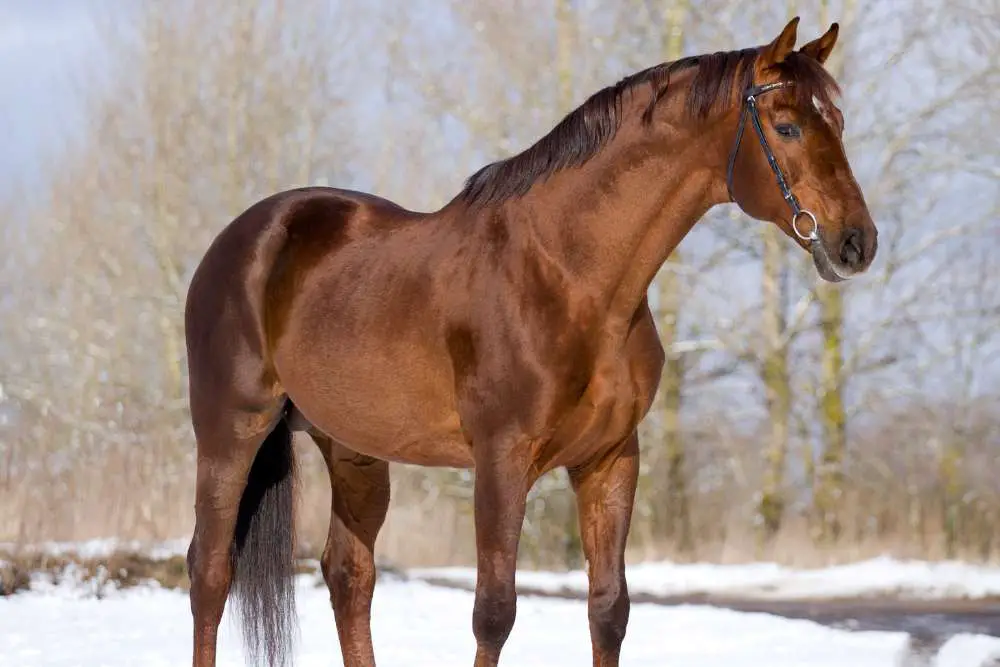
Shades Of Chestnut And Sorrel
Let’s look at some keywords to describe chestnut coat color variations.
Not only are there the terms “chestnut” and “sorrel,” but there are also names for the various shades of this red color. There are several sorrel horse colors.
Sorrel
Some horse enthusiasts say sorrel horses have a copper coat color throughout their bodies with a matching mane and tail.
Light Sorrel
Sometimes sorrels can be on the light side, which is often when they are confused with palomino. Light sorrels, also known as flaxen sorrel horses, often have a lighter mane and tail.
If you can’t decide whether your horse is a light sorrel or a palomino, send in a hair sample and get an exact answer.
Blonde Sorrel
The term “blonde sorrel” is interchangeable with the term “light sorrel.” Again, it is slightly paler than your straight sorrel but often has a flaxen mane and tail.
Chestnut Sorrel
People will refer to a red-factor horse as a chestnut or sorrel. If you are in doubt, call them chestnut since that covers all horses that are e/e and it is the more commonly used term.
Chestnut
Chestnuts have a reddish-brown coat color, and their mane and tail are either the same color as the coat or lighter. The absence of black hair on the chestnut’s body makes them easy to identify.
Flaxen Chestnut
Like blonde or light sorrels, flaxen chestnuts can be confused with palominos. Examine their coat to see if it has a more red or golden base (the latter indicating that the horse is a palomino).
Flaxen chestnuts will have a light mane and tail color that are lighter than the horse’s body. This can vary from a few shades lighter to a mane that almost appears white.
Red Chestnut
As the name suggests, a red chestnut will appear redder than reddish-brown. Red chestnuts have a mane that matches their darker coats. If your horse’s coat has more red tones than an orange, you can call them a red chestnut.
Liver Chestnut
Liver chestnuts can make identifying their color difficult, with some being so dark that they are confused with black horses.
They typically have a darker mane and tail that appear black but are actually a heavy red coloring that appears black.
It varies from horse to horse (and depends on how dark they are), but you can think of liver chestnuts as having a chocolate color with red undertones.
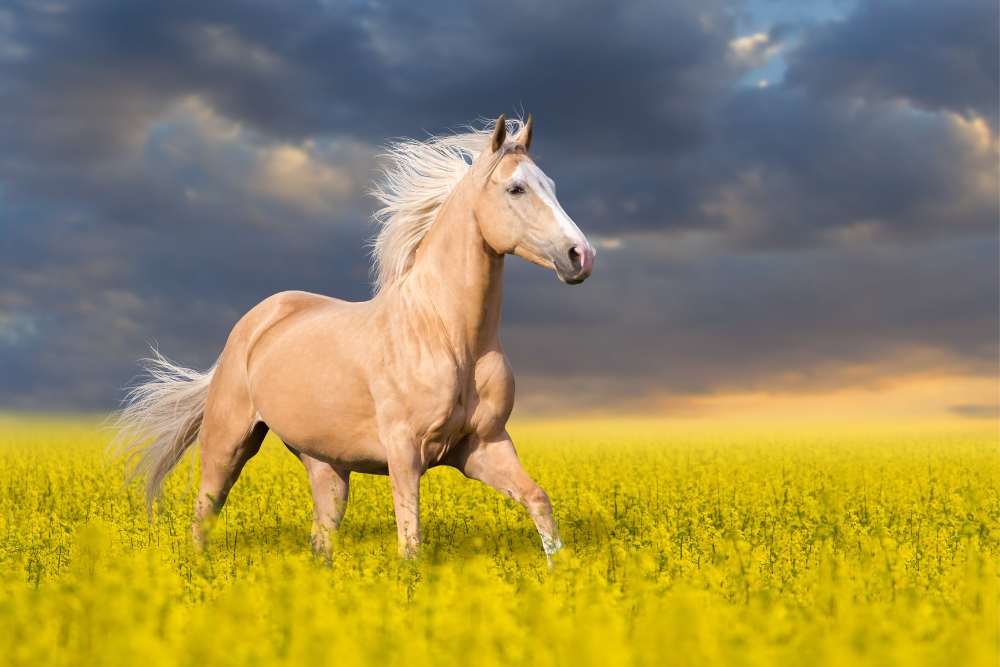
Chestnut And Sorrel Base Coat Colors
With the addition of different genes, a sorrel or chestnut base coat color can turn into a wide range of beautiful colors.
Palomino
Palominos have a red base coat with a cream dilution on it. Their coats range from light cream to dark golden.
Palominos have dark skin, unlike cremello skin. As for the technical side of things, palomino’s genotype is expressed as N/Cr.
The N stands for normal (as in non-dilute), and the Cr stands for cream. If a horse is N/N, they have no cream dilute gene and cannot produce cream offspring.
Cremello
Two palominos (a chestnut base with the cream dilution gene) have a 25% chance of producing a cremello foal.
This genotype is Cr/Cr. Cremello horses have a double cream gene. They are sometimes called “double dilutions” and can only produce cream offspring.
They are unable to have chestnut offspring, regardless of whether the other parent is chestnut.
Red Dun
Red Duns are completely red (sorrel or chestnut) with the Dun gene. They range in color from light peach to sorrel red.
Red duns never have black points, though their mane, tail, and primitive markings can be dark red.
Look for a dorsal stripe (a line along the horse’s back) to indicate whether a horse is a dun or not.
Red Roan
Chestnut roans or red roans are red factor horses affected by the roan gene.
They are easiest to identify in summer, when their coats are most obvious.
Red roans look chestnut or sorrel but have thousands of white hairs mixed with their red coats.
Gold Champagne
Champagne horses are a color that not many people know about. You may have even seen a champagne horse before and assumed it was a palomino.
Unlike palominos, which have black skin, champagne horses have a dilution that causes pink or lavenderish skin.
Amber-colored eyes accompany this. Gold champagne has a red base and the champagne gene. This is expressed as N/Ch.
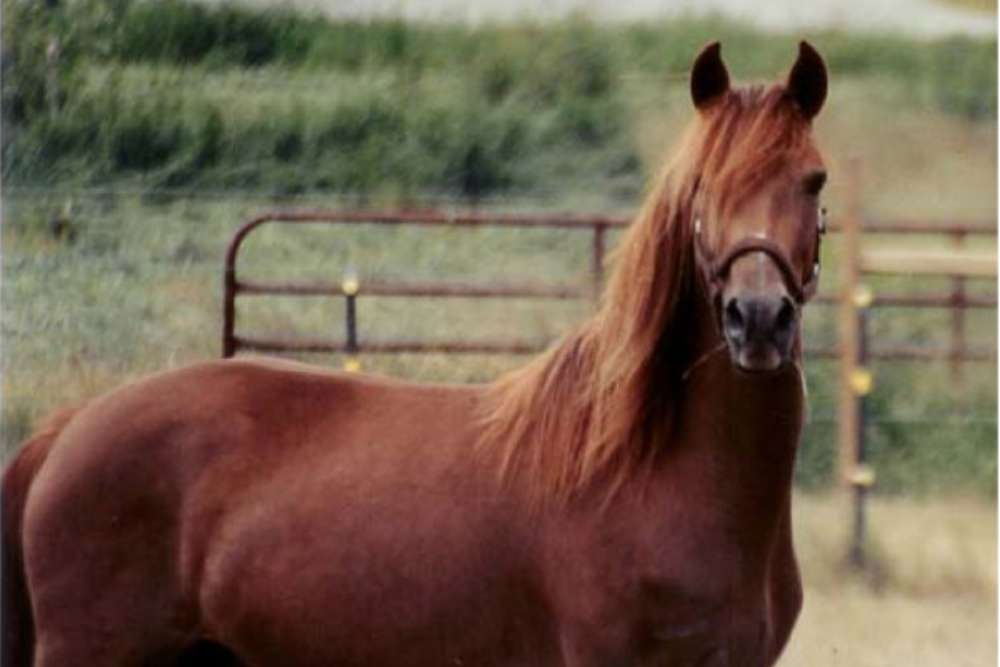
Famous Sorrel Horses
There have been many famous sorrel horses.
Traveler
Traveler was one of the first horses of the American Quarter Horse breed, but no one knows anything about his heritage.
He was the father of important Quarter Horses like Little Joe, King (later named Possum), Jim Ned, Judge Thomas, Texas Chief, and Captain Joe.
Joe Reed II, Hard Twist, Silver King, Tonto Bars Hank, and Tonto Bars Gill were also his offspring.
In 1994, Traveler was nominated into the AQHA Hall of Fame.
Little Sorrel
Little Sorrel was Confederate General Thomas J. “Stonewall” Jackson’s trusty steed and became a legend during the civil war.
General Jackson acquired two sorrel horses one larger and one on the small side, that he named, Big Sorrel and Fancy. He chose Big Sorrel to be his main mount but it turned out that Big Sorrel was easily startled and didn’t make an ideal war horse.
Fancy on the other hand a small Morgan ended up being the steady, trustworthy horse Jackson needed. He changed Fancy’s name to “Little Sorrel.”
Sport
The 14-season Western series Bonanza featured several stunning sorrels named Sport in the show. The first two horses that played the part were head tossers and difficult to ride.
The third horse to play the role of Sport was much better behaved and trained but ended up getting hurt after several seasons and never recovered to his normal self.
Champion The Wonder Horse
Another great example is the original “Wonder Horse,” Champion. He starred in many different Gene Autry films.
There were actually 3 different Champions throughout the years producing these films. The first one was the darkest color sorrel and the other two were a lighter sorrel color.
Old Sorrel
In 1990, “The Old Sorrel Horse,” a sorrel Quarter Horse, was put into the American Quarter Horse Hall of Fame.
He was the unnamed stallion who served as the foundation of the King Ranch’s breeding program.
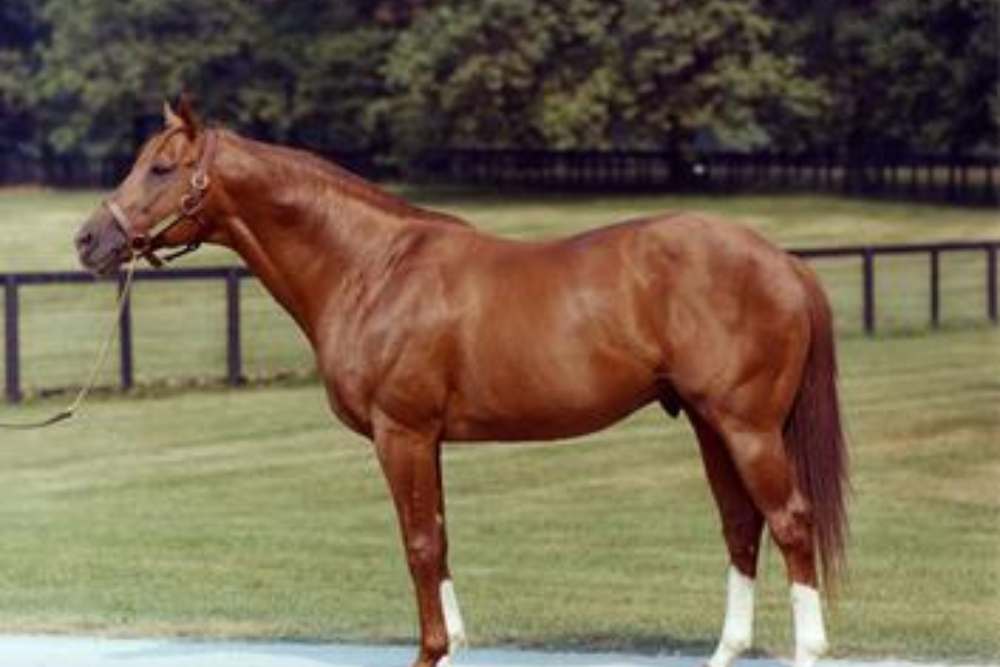
Famous Chestnut Horses
There are many famous chestnut horses that have made an impact in the horse world. Some of the most notable include:
Secretariat
Secretariat is a Triple Crown-winning American Thoroughbred racehorse who is widely regarded as one of the greatest racehorses of all time.
Horse Chestnut
Horse Chestnut was bred in South Africa before being exported to further his racing career in Florida. Even though his story had a sad ending, Horse Chestnut is still the best racehorse South Africa has ever made.
Jus de Pomme
You may have heard of Jus de Pomme if you are a showjumper. He was a Grand Prix show jumper and the only horse to win two Olympic gold medals at the same event, both individually and as part of a team.
Biko
Americans were keen on the chestnut Irish Thoroughbred gelding, Biko, and he became a well-known “ambassador” for the sport of eventing.
After Biko and O’Connor won a silver medal at the 1996 Olympic Games in Atlanta with O’Connor, Biko was given the USEA’s “Horse of the Century” award for the 20th century and was inducted into the USEA Hall of Fame in 2006.

15 Best Sorrel Horse Names
If you are trying to come up with some good horse names for a chestnut or sorrel horse, here are some of the best:
- Ruby
- Red
- Rose
- Chilli
- Spice
- Salsa
- Sunny or sunshine
- Firefly
- Cheyenne
- Fox
- Ginger
- Sunset
- Merida
- Ladybug
- Pumpkin
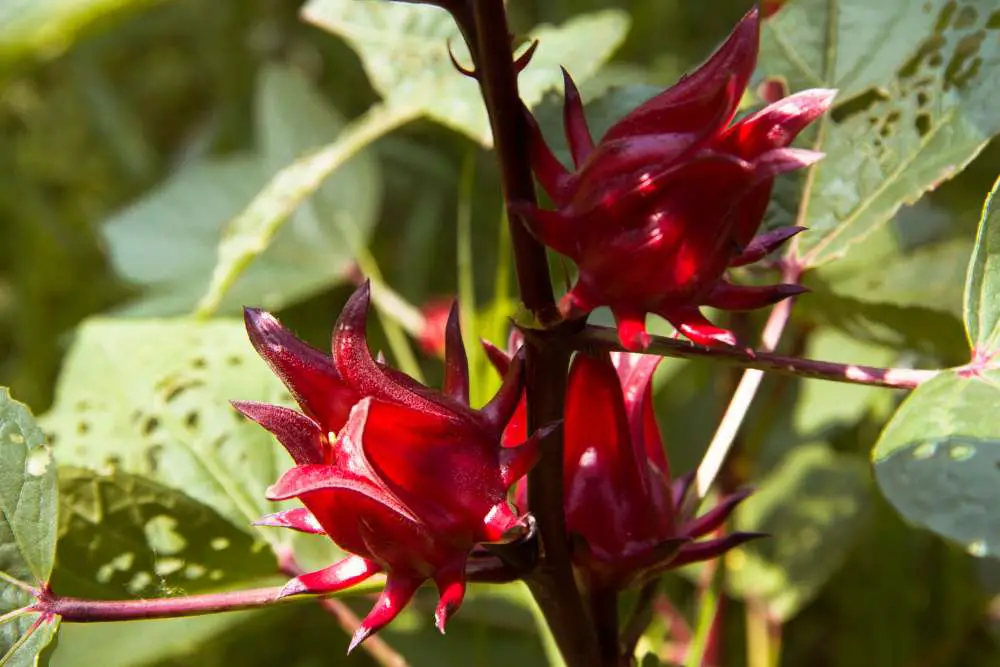
Where Did The Term “Sorrel” Originate From?
The term “sorrel” to describe a horse’s coat color is believed to have originated from the French word “sorel,” which means “reddish-brown,” and is thought to be derived from the red hibiscus flower that has the same name.
The flower, also known as “Jamaican Sorrel,” is a flower that is bright red in color and is a short-lived perennial.
Was Secretariat A Sorrel Or Chestnut?
Secretariat was a chestnut Thoroughbred racehorse. He was born on March 30, 1970, and was registered as a chestnut with a white blaze and four white socks.
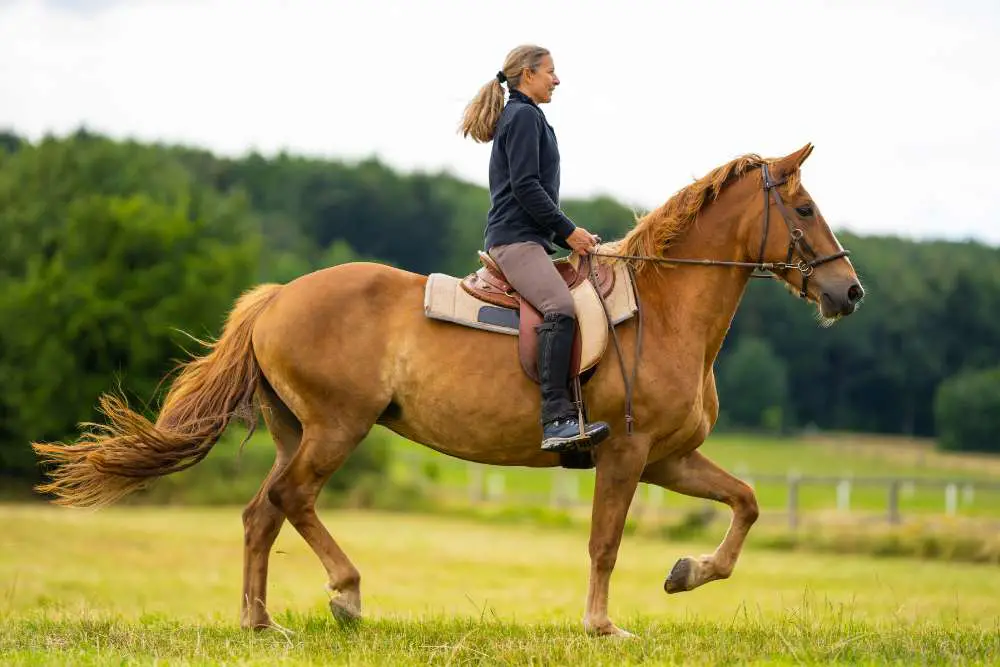
Can A Sorrel Horse Have A Black Mane?
No, a sorrel horse cannot have a black mane or tail. Sorrel horses have a reddish coat with no black pigmentation.
Their mane and tail are usually the same color as their coat, but they can vary in color from lighter to darker.
Are Sorrel Horses Rare?
No, the sorrel coat color is not rare. They are one of the most common coat colors for horses, and can be found in many different breeds.
What Color Looks Best On A Sorrel Horse?
That is up to you to decide!
In my opinion, I think hunter green, navy, and white look classic on a sorrel.
If you want to go more colorful, baby blue, lime green, or turquoise would look nice.
How Much Do Sorrel Horses Cost?
Sorrel horses have a wide range in terms of price.
You can pick some up for cheap on auction for under $1000 (and look into rescue options), or you can pay over $50,000 for a show stopper that is established and ready to win!
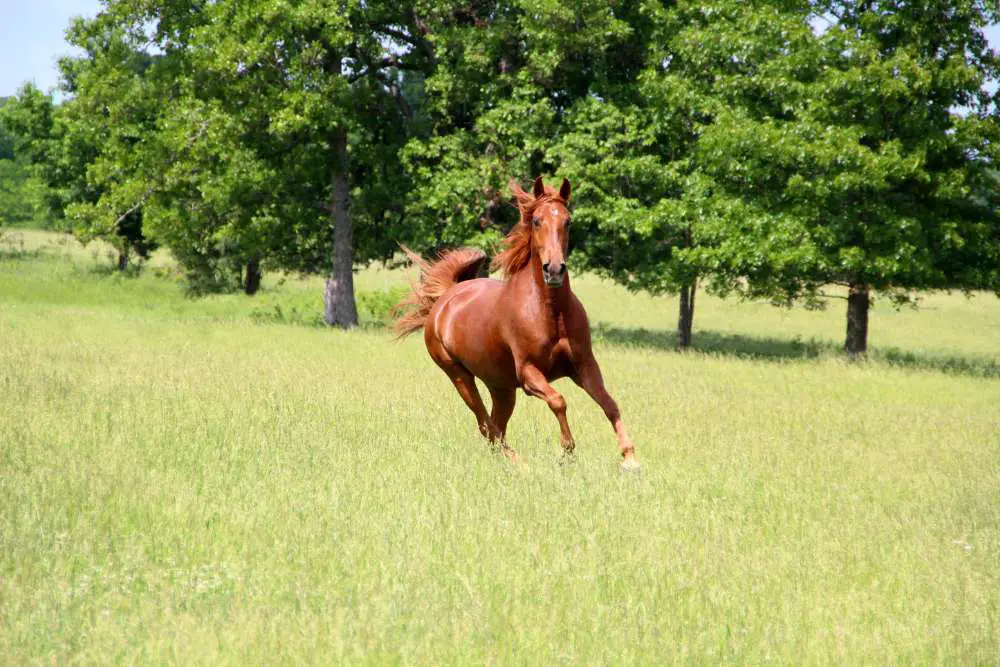
Conclusion On Sorrel And Chestnut Horse Colors
In conclusion, the color sorrel in horses is genetically the same as chestnut, but red horses can be called either sorrel or chestnut, depending on what people think.
Many horse breeds come in chestnut or sorrel, which is one of the most common horse colors.
Western horses are commonly referred to as sorrels, whereas English horses are commonly referred to as chestnuts. Chestnut is the more popular term around the world.
Keep in mind that chestnut and sorrel are often used interchangeably, so the choice of which term to use comes down to the owner’s preference.
Cheers, Kacey


